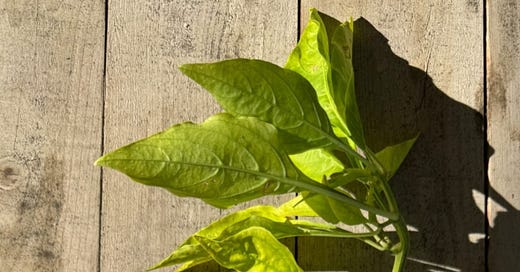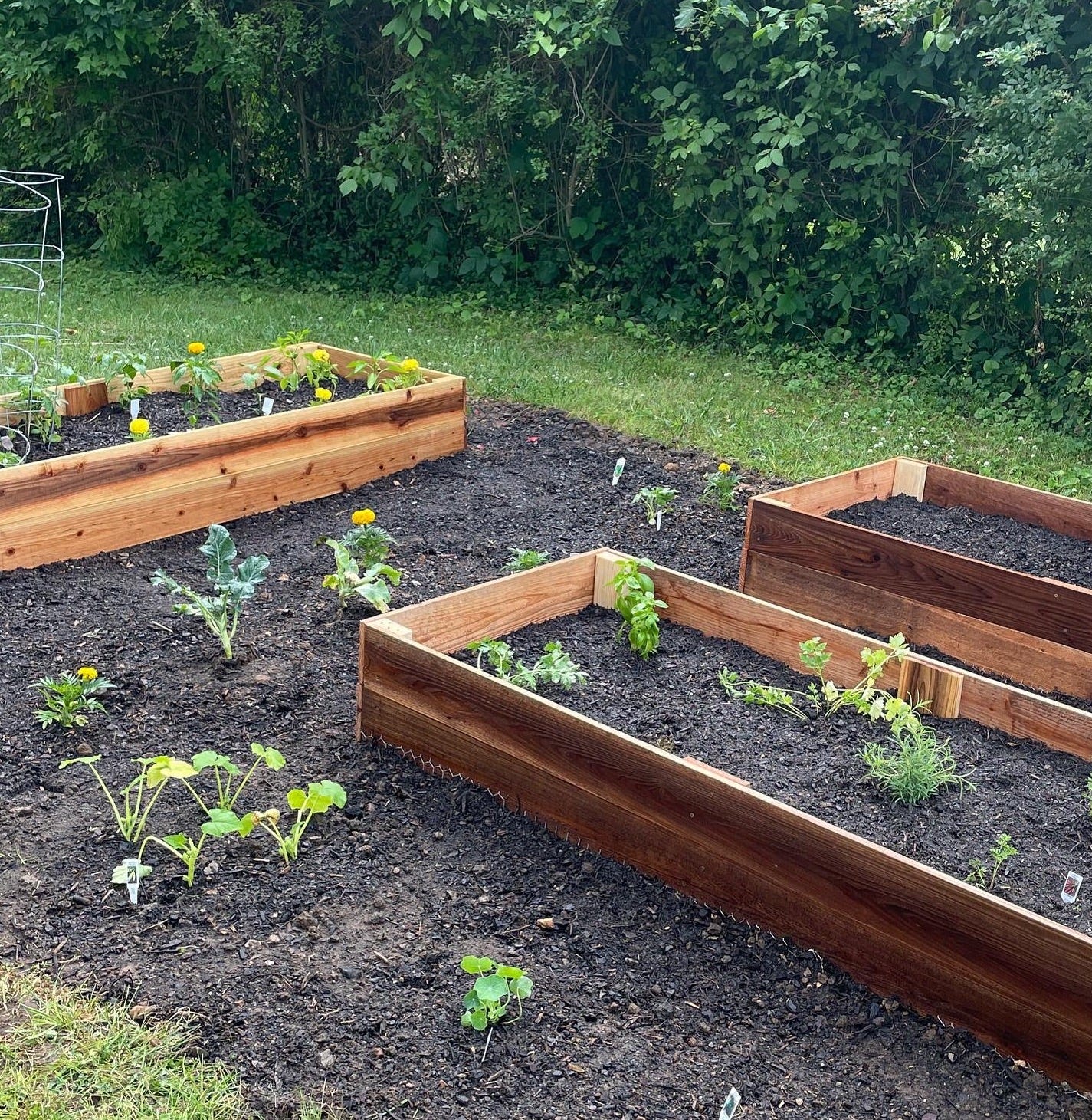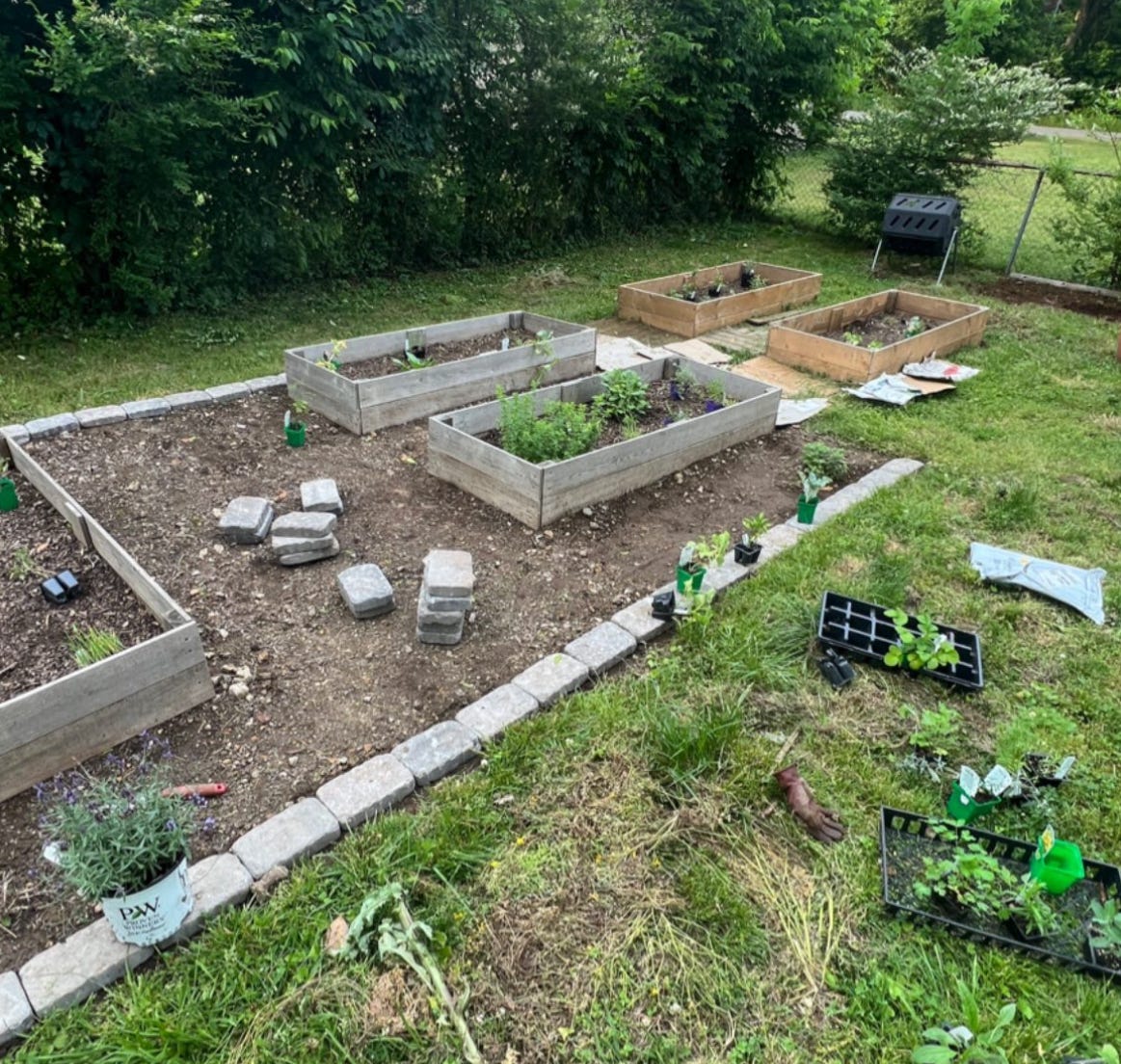How to Start a Backyard Garden
Patio, backyard, raised beds, and everything in between to grow your own veggies as a beginner!
Welcome to a little gardening crash course. I am no expert in the land of gardening and I still have so much to learn! However, I have learned a lot through trial and error and have expanded our garden into 7 garden beds. I prefer to garden intuitively, to learn from the plants, and to gather the lessons the garden offers when we slow down long enough to tune in. Here are some steps to start your backyard vegetable garden this Spring/Summer. If you take away anything from this newsletter, have it be to just try it and start!

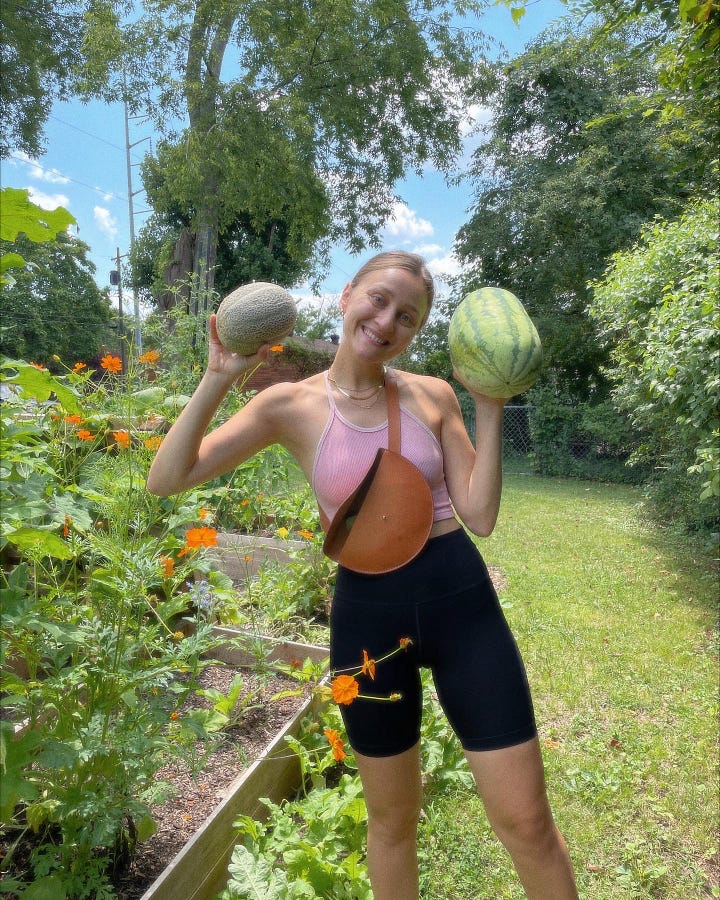
Step 1: Make a plan
It’s not just about what you’re going to grow, more so where to place your garden! Bigger square footage and garden beds aren’t always better. You can utilize pots or vertical space if you’re in an apartment, build a raised garden bed, or even plant right in the ground depending on the soil. You can even repurpose old containers like milk cartons, claw containers (what your strawberries come in), cinderblocks, etc — get creative! I don’t suggest planting right in the ground because it’s likely your soil needs some nourishment, but we’ll get to that later.
Vegetable gardens need at least 6-8 hours of full sun, so be sure your crop is in the right location. If your plants don’t get enough sun, they won’t yield much harvest and no one wants that! However, if you live in a very hot climate like I do in Nashville, crops in the Brassica family prefer some shade so they don’t overheat.
Step 2: Choose the size that suits your space
If you live in an apartment, a pot is a great option to grow easy crops like lettuces and herbs! If you’re able I suggest building a cedarwood 4’x8’ raised garden bed. For an organic garden, it’s important to be sure the wood you use is untreated cedar. Be realistic with the space you have with enough sun, and plan around that. Square foot gardening is a method that helps maximize your space while planting. One thing I’ve learned over the years is to take the plant spacing suggestions lightly, and maximize your raised bed space!
Step 3: Look up your growing zone
Your growing zone is easy to find. Just google your city, state, and growing zone to find out what zone you are in. This determines plant hardiness, what may or may not grow easily for you, annuals vs perennials, native species, etc.
From here you can dream up a list of veggies (and/or fruits) you’d like to grow this summer!
Step 4: Prep your garden
With a raised garden bed, it’s always a good idea to protect your bed from underground critters. Adding chicken wire to the bottom of your bed will protect your crop from becoming an afternoon snack. Then, you can lay down cardboard to kill the weeds/grass, spray it down with a hose to settle it down, and you can even add a layer of sticks and leaves to help fill the bed. Then, add organic compost and soil to the top 1/3 of your bed. In starting a garden bed, I prefer to use organic compost to kick-start the plant’s growth! Every year in early spring, I top off the garden beds with a fresh layer of compost and leaves from fall.
Step 5: Seeds vs Starter Plants
The first tip is to plant what you’ll eat! As a beginner, I highly suggest supporting a local farm and purchasing starter plants that are on your “to grow” list! Not only can you find great affordable and organic options, but you also get to support a local farm that I guarantee needs the support. Not to mention, at this point of the season, there’s not much time left to start veggies from seed and it can be discouraging for a beginner.
I’ve tried to grow from seeds before and it was too much pressure for my liking. Getting starter plants from local farmers is just as rewarding!
Step 6: Planting times
Generally speaking, you will want to be sure you plant your veggies after the chance of frost has passed. For some cold hardy crops like broccoli, kale, cauliflower, and brussels sprouts, can be planted from seed (these are easy ones) before the chance of the last frost. Typically, if you are buying a starter plant from a local farmer, that means it has been hardened off to the outdoors and is ready to get planted for the summer!
Planting according to your growing zone or asking the farmer you bought the crop from is always a good idea. Just make sure you get the plants in the ground at the right time for a better chance of strong growth.
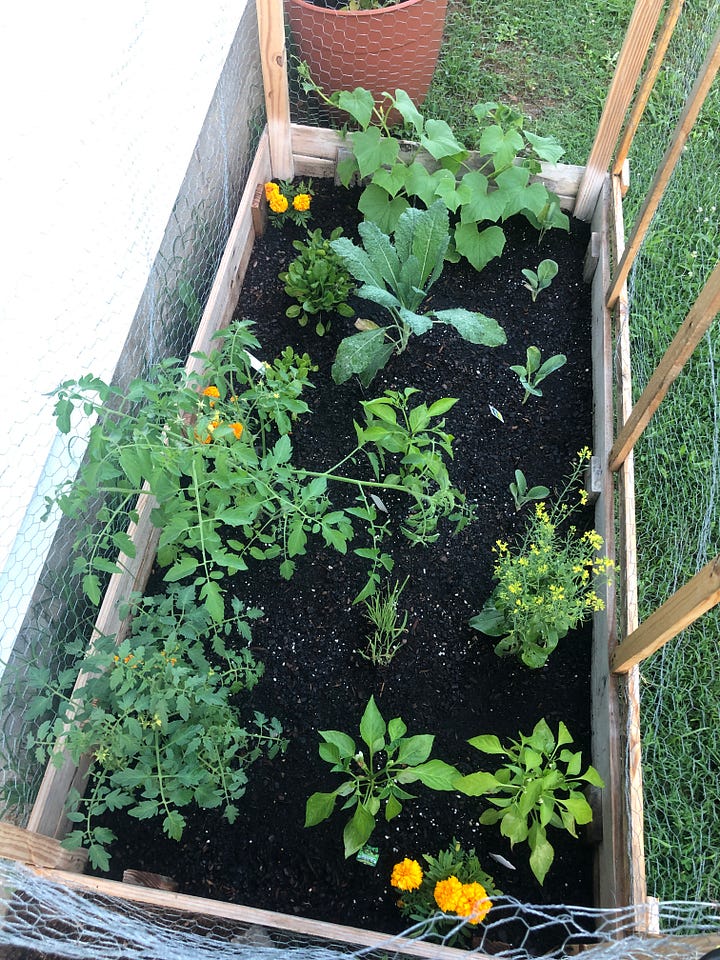
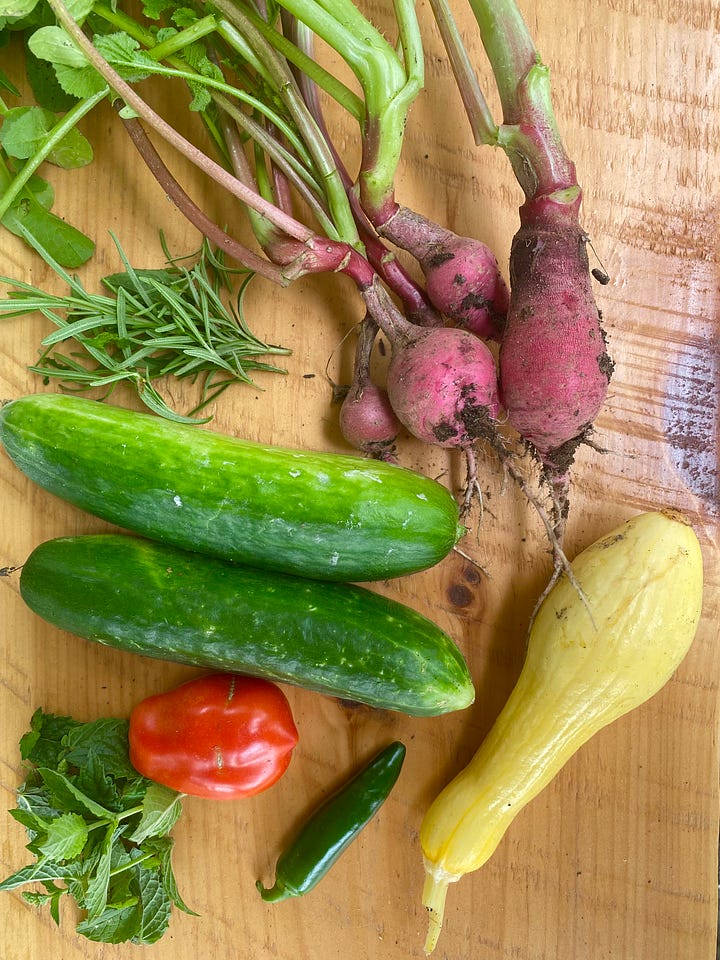
Step 7: Companion planting
One of my favorite techniques in starting a backyard garden is companion planting. There are many charts you can follow on Pinterest or Google, so I’d start there! You can search for something like, “What to grow with tomatoes.”
Plants produce and require different amounts of nitrogen, calcium, and potassium, and it is important to be mindful of this when planting your raised garden bed. Companion planting helps keep the soil balanced, helps ensure the plants aren’t fighting for nitrogen or calcium and helps deter harmful bugs like aphids.
Another great way to utilize companion planting is when you are utilizing vertical space. For example, the leaves and shade from your tomatoes or cucumbers (if trellised) can shade your lettuce and more sensitive plants.
Marigolds are great companion plants no matter what, as they help deter pests/deer and bring in pollinators to support the nearby vegetable plants.
I could go on and on about companion planting, but for now, this is a great place to start!
Easy plants to grow for the summer:
Cucumber
Peas
Radish
Okra
Beets
Beans
Potato
Onion
Lettuce
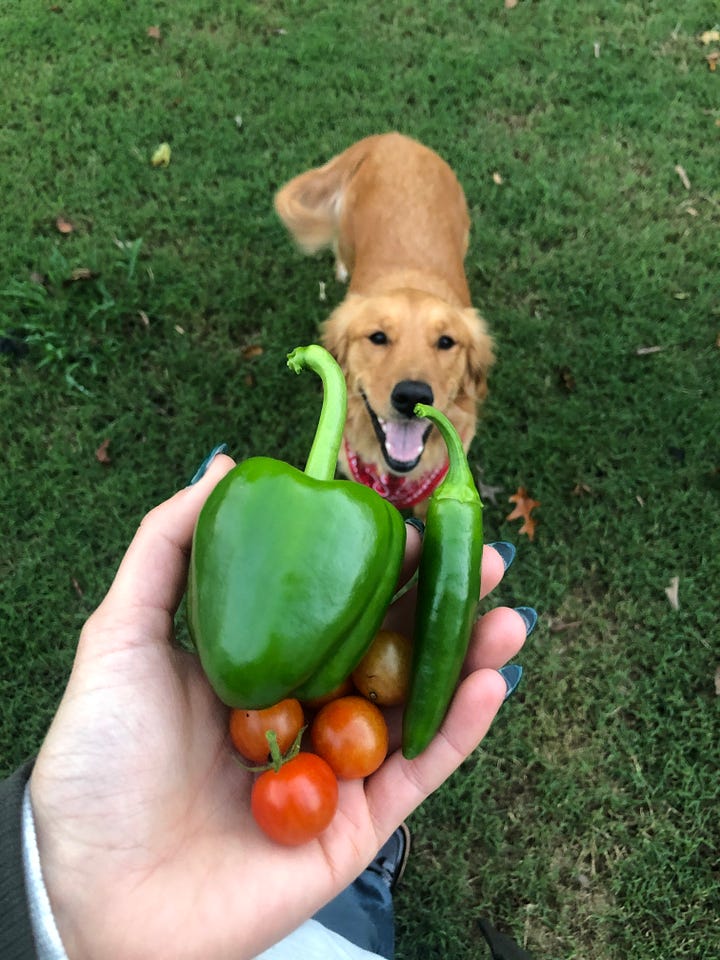
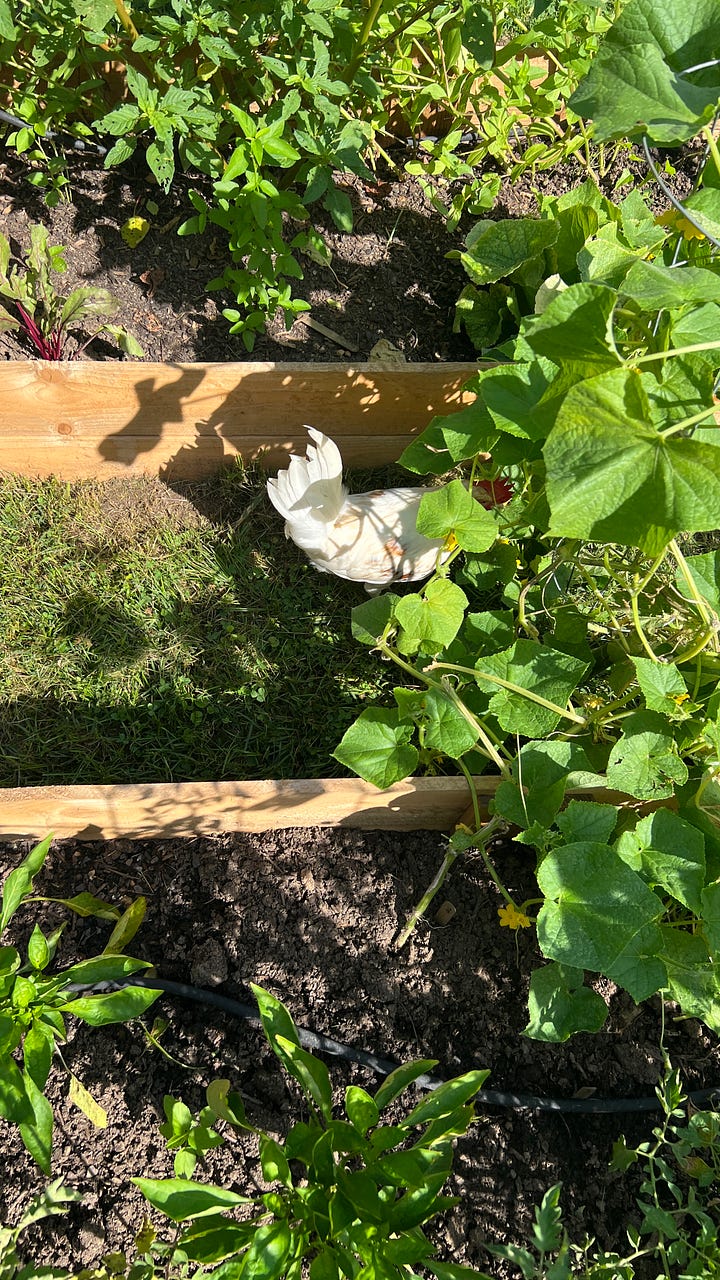
This really is a crash course to gardening and there are so many fun learning curves to backyard gardening! However, at the end of the day, even gardeners with years of experience continue to experiment and learn from trial and error. To me, that’s the beauty of gardening — surrendering to the process, trusting your intuition, and being patient through the growing season.
So, get your space prepped, support your local farms, and get your hands in the soil! Gardening is my therapy, the way to ground and disconnect. I promise it’s healing if you are open to hearing the silent lessons from the garden.
If you have any questions about getting started with your backyard garden, please comment on this post or DM me — I’d love to chat :)
Happy Gardening!
P.S. These photos are of gardens I’ve grown, which is such a fun evolution to reflect on. Below is my current garden setup, which just needs some cleaning up before the season really kicks off.

